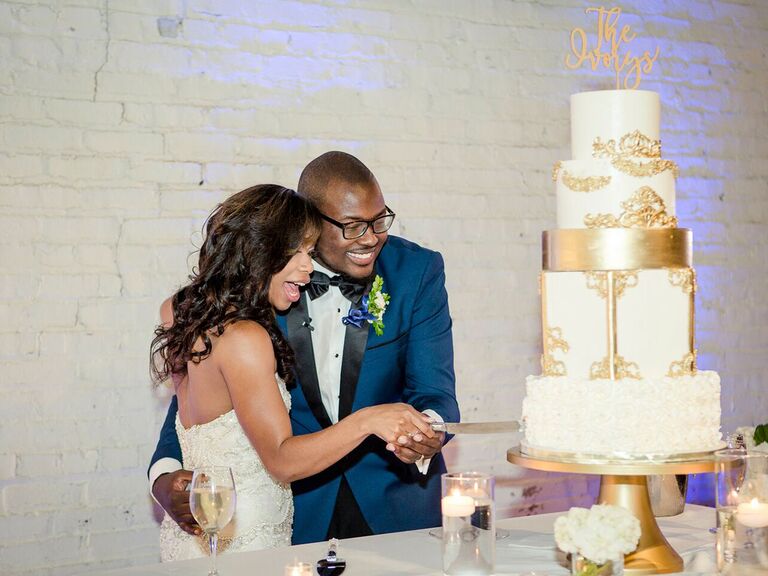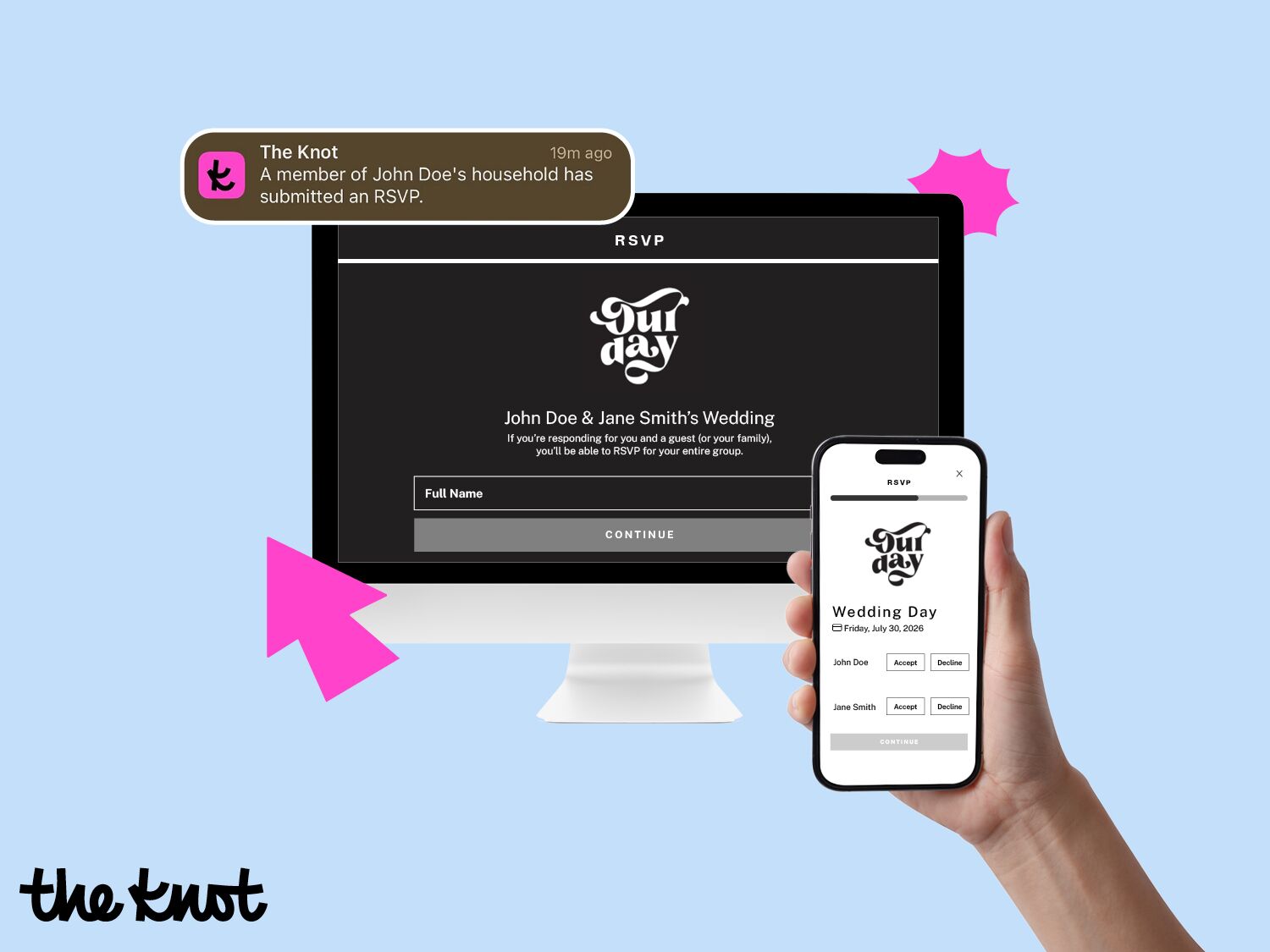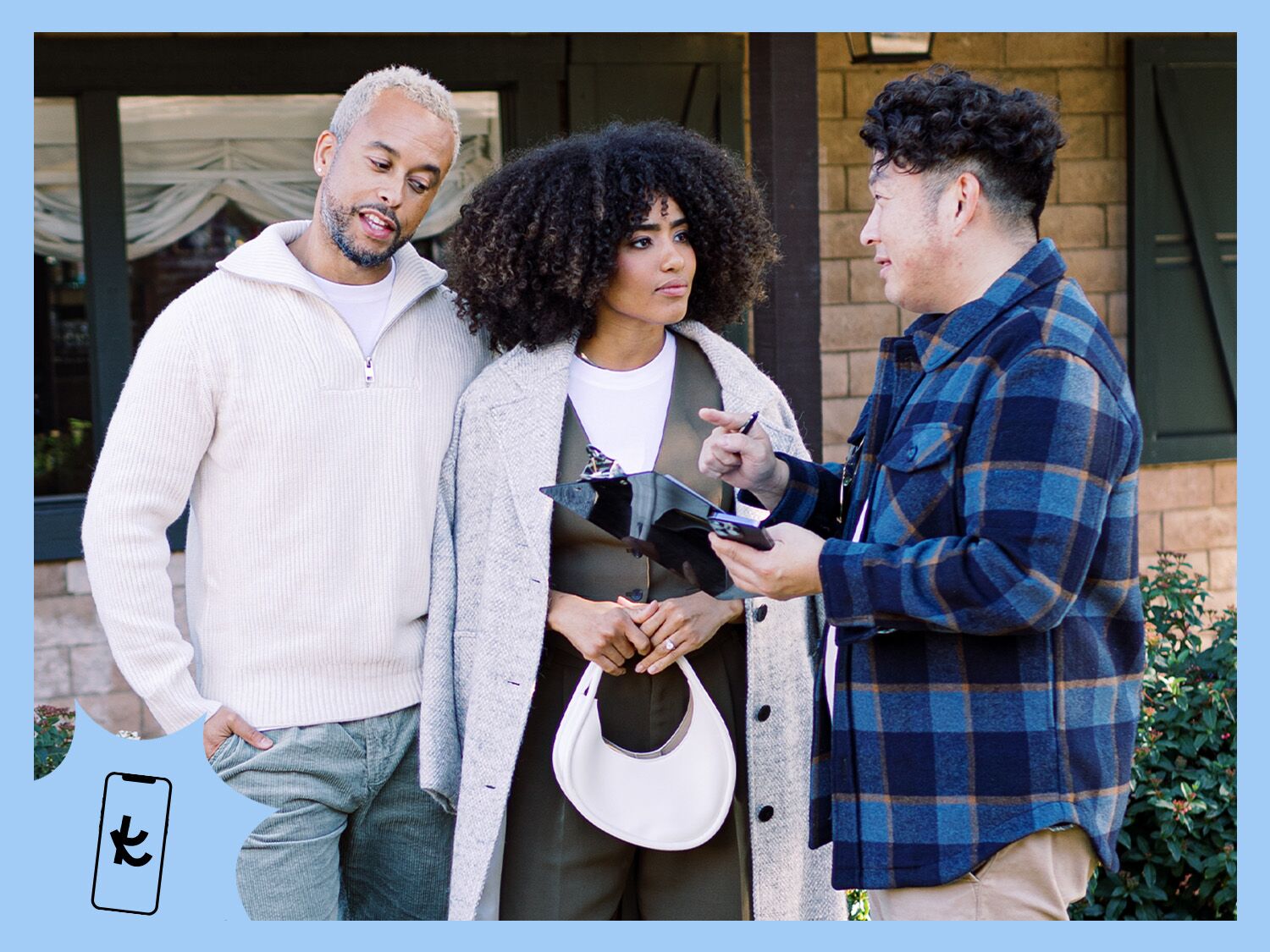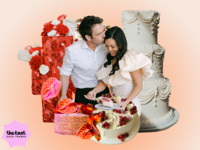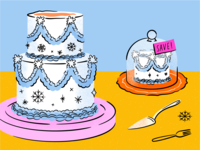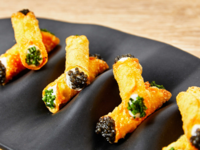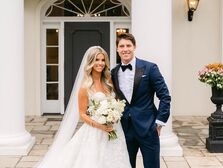How to Find a Wedding Cake Baker Near You for Your Dessert Needs
Most couples can agree that on the list of fun wedding-planning to-dos, finding a wedding cake baker usually sits towards the top. The wedding cake is a classic piece of your wedding day, not to mention a tasty treat that all your guests can enjoy. The tradition dates all the way back thousands of years and represents all of the sweet times you and your spouse will hopefully have ahead of you. Today, the wedding cake is a true reflection of the couple and emulates whatever they choose to highlight about their wedding or their relationship.
If you're like most couples, you might have some idea of what you want your wedding cake to look—and taste–like. If so, that's a great place to start when it comes to finding a wedding cake baker. A wedding cake shouldn't be just your average cake—it's quite unique and stands apart from other desserts and celebratory cakes. Not only does a wedding cake heavily focus on aesthetics, as it is one of the most common ceremonial photographed captures, but Sarah Chianese, owner, planner and executive chef at Mangia and Enjoy!, explains that it also serves as an opportunity for the couple to express themselves. "Couples intend their wedding cake to stand out above the crowd of cakes and desserts they experienced before or ever hope to see or taste again," she adds.
Ready to find a wedding cake baker near you? We've got a step-by-step guide to finding the perfect pro, which starts with checking out The Knot to find a wedding cake baker near you.
In this article:
- When to Hire a Wedding Cake Baker
- Wedding Cake Baker Pricing Considerations
- How to Choose a Wedding Baker
- How to Find Baker for Your Wedding Cake and Desserts
- How to Coordinate With Your Baker After Booking
When to Hire a Wedding Cake Baker
While you might not think a wedding cake takes all that long to make, it's important that you hire your wedding cake baker well in advance. In fact, Janette Stenstrom, owner of All Things Cake in Tulsa, Oklahoma, recommends scheduling your wedding cake tasting at least three to six months in advance. "Some bakers book up to one year in advance, so it's a good idea to get on their radar and put down a deposit as early as that, but I don't recommend making final decisions until a bit later," she says. "Your wedding style can evolve as the wedding planning goes on, and you don't want to have to make too many design changes to your wedding cake by committing to the design too early."
Wedding Cake Baker Pricing Considerations
Before you go ahead and hire your wedding cake baker, it can be helpful to factor in the following price considerations so that you know the exact type of cake you need.
Extent of the Design
Most cake bakers consider their creations works of art, so you can expect that the greater the design, the heftier the price tag. "Elaborate and time-consuming designs such as intricate piping, hand painting, fondant work or sugar flowers can add to the price of your cake," says Stenstrom. "If you want to save a bit on your cake, you may want to avoid these design elements and opt for textured buttercream instead of hand piping." Here's a look at how much wedding cakes typically cost.
Cake Size
If you're worried that you'll go over budget due to the fact that you have a large number of guests, Chianese recommends discussing alternative options with your cake baker to fit both your dream and your budget. "You could have your baker create your dream vision cake as a ceremonial cutting cake to suit a smaller guest count than your total and then have them make a sheet cake with the same flavor profile to feed the rest of your guests," she says. "For example, if you have 150 guests at your wedding, you can have the ceremonial cutting dream-style wedding cake made large enough to feed twenty and a sheet cake for 150."
Dietary Considerations
If you need the cake to be vegan, gluten-free or made without certain allergens like eggs or tree nuts, this can raise the cost. Rather than burdening your budget with a cake that accommodates every single guests' dietary restrictions, Chianese recommends discussing the possibility of having your baker create a mini-cake or even cupcakes with the same flavor profile specifically for those with the restriction.
Specialty Flavors
It's no surprise that certain ingredients and flavors might cost more. If you're comfortable with just the basics, you might be able to curb your budget. But if you are looking for speciality flavors, you might have to make a few upgrades. "If the two of you would love and plan for a simple, tasty three-tier pound cake base with vanilla frosting and fruit filling yet, your baker also brings out a sample of their house-made cannoli-filled cake with crushed pistachio topping, or their passion fruit cake, or a tiramisu flavor bomb that makes the two of you swoon," says Chianese. "Once you've tasted the flavor profile of your dreams, what you thought you were coming in for will no longer suffice, resulting in the need for a budget revisit."
How to Choose a Wedding Baker
Here are some expert tips for how to choose the right wedding cake baker for your big day.
Comb through customer reviews.
As you are probably doing with all your other vendors, it's helpful to read customer reviews on a site like The Knot to get an idea of how satisfied past customers have been with this cake baker. "You want to make sure that the cake baker you go with is skilled enough to execute your vision, but it's equally important that they are easy to communicate with and that you feel wholly confident they will bring you the results you are looking for," says Chianese. "If you are looking for a unique cake with out-of-the-box concepts, you don't want to choose a baker with a portfolio with only eight designs and states those are the only designs you can choose from."
Get referrals from your vendors.
If you're at a loss or simply looking for a good place to start, lean on your other vendors, such as your catering company or venue to give you recommendations and referrals for a wedding cake baker. "These are people who work with bakers all the time and will know if they are reliable, on time, and professional—plus, the chances are good that they have tasted their cake on more than one occasion," says Stenstrom.
Meet with the cake baker in person.
Before hiring your cake baker, it's a good idea to meet with them in person or at the very least over Zoom. "There are so many different flavors and styles to choose from, and your wedding cake can be a personal part of your wedding—it's something all your guests will enjoy with you, after all!" says Nora Sheils, co-founder of Rock Paper Coin and founder of Bridal Bliss. "Meet with your baker, get to know their process and your options, and be sure to sign a contract and pay a deposit right away to lock in your date!"
How to Find Baker for Your Wedding Cake and Desserts
The best way to find a wedding cake baker is the same way you'd find any other vendor for your wedding—relying on customer reviews, checking The Knot Marketplace to see which vendors are local to you and are highly rated from other Knot members. Additionally, it can pay to ask for referrals from your venue or other vendors who may have experience working with cake bakers that are in your area and that may be available for your wedding date.
How to Coordinate With Your Baker After Booking
Once you've selected your baker, follow these expert tips for how to coordinate with them throughout the planning period and ensure that everything goes without a hitch.
Get everything in writing.
Most professional cake bakers will create and distribute a contract that both parties can sign. This will ensure that all agreements are clear and that there are no discrepancies when it comes to deliverables. "Details within the contract should include price, payment schedule, design features, flavors choices, the quantity the cake expects to feed, the total number of cakes if more than one, the deadline for final headcount number and details on any price fluctuation and the details involving the transportation to the venue and/or pick-up details," says Chianese.
Clue in your planner and/or venue.
If you are working with a planner, Chinese recommends making sure they're up to speed when it comes to the details surrounding your wedding cake. "Your planner should be aware of the logistics timeline, load-in details and any other relevant information as the date gets closer," she says. "If you're not working with a planner, designate someone in your wedding party who is excellent at logistics and communication and provide your baker with that person's name, or of course, that person may end up being you."
Follow up a month before the big day.
As you tie up loose ends and prepare for the final wedding countdown, be sure to follow up with your wedding cake baker ideally a month before the wedding. This will help prevent any scheduling or communications issues that could arise the day of. "It's imperative to pre-arrange instructions for safe load-in of the cake after discussing with your planner or wedding venue advising there needs to be a clear path and parking spot for whoever is going to deliver the cake as close to the entrance where the cake needs to go," says Chianese. "If the baker needs to assemble the cake on-site, it's important to clarify there is a safe place for that to occur and work out the timing so that the baker doesn't arrive in a situation where they are trying to walk through a guest-ridden area with a 4-tier cake as it's best to have zero chances of anything going awry before the big reveal."
Follow up again three days before.
Chianese recommends checking in with your wedding cake baker one more time about three days before the big day. "This check-in gives you the opportunity to thank them and let them know how excited you are to showcase their talent and eat their delicious creation," she says.
"To show your gratitude further, you could pre-arrange an envelope with your baker's name on it and have your planner or another responsible party offer the gratuity once the cake has arrived safely and as expected."
